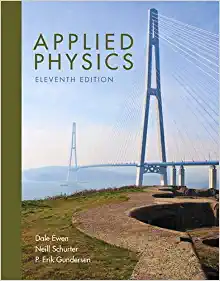Answered step by step
Verified Expert Solution
Question
1 Approved Answer
Magnesium fluoride (MgF') is a transparent solid with an index of refraction of 1.38, and can be deposited in very thin layers to create coatings.
Magnesium fluoride (MgF') is a transparent solid with an index of refraction of 1.38, and can be deposited in very thin layers to create coatings. (a) [4 pts] Suppose that you want to create an anti-reflection coating on a piece of glass (index of refraction 1.45) using a thin layer of MgF', choosing a thickness such that reflections off the top and bottom surface of the MgF' interfere destructively. If you are designing the coating for light of wavelength 532 nm (in vacuum) at normal incidence (i.e. incident perpendicular to the surface), what are the three smallest thicknesses you could choose for your coating? (b) Bonus point [ 1]: which of those three thicknesses would give you the widest bandwidth anti-reflection coating - that is, the largest range of wavelengths on either side of 532 nm before you get to a wavelength whose reflections off the two MgF' surfaces interfere constructively? Explain or derive your
Step by Step Solution
There are 3 Steps involved in it
Step: 1

Get Instant Access to Expert-Tailored Solutions
See step-by-step solutions with expert insights and AI powered tools for academic success
Step: 2

Step: 3

Ace Your Homework with AI
Get the answers you need in no time with our AI-driven, step-by-step assistance
Get Started


